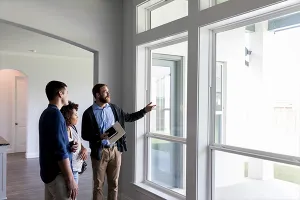NAR Library & Archives has already done the research for you. References (formerly Field Guides) offer links to articles, eBooks, websites, statistics, and more to provide a comprehensive overview of perspectives. EBSCO articles (E) are available only to NAR members and require a password.
Background
U.S. Wind Generation Hit Record in April 2024, Exceeding Coal-Fired Generation (U.S. Energy Information Administration, Aug. 13, 2024)
“Electricity generation from wind established a new record in the United States in April, and wind generation exceeded coal-fired generation in both March and April, data from our July 2024 Monthly Energy Review show… This past spring was the first time U.S. wind generation has exceeded coal-fired generation for two months in a row.”
A Decade of Growth in Solar and Wind Power: Trends Across the U.S. (Climate Central, Apr. 3, 2024)
“Wind accounts for around 12% of the nation’s capacity from all utility-scale electricity sources (including renewables and fossil fuels such as coal, oil, and natural gas).”
“The EIA forecasts that electricity generation from wind will grow by 6% in 2024, while coal and natural gas will continue to decline.”
“In 2023, the U.S. generated more than twice as much electricity from wind energy than in 2014 — an increase of 243,580 GWh or 134%.”
Wind Power Facts (American Clean Power Association)
“Today, more than 70,000 wind turbines across the country are generating clean, reliable power. Wind power capacity totals 146 GW, making it the fourth-largest source of electricity generation capacity in the country. This is enough wind power to serve the equivalent of 46million American homes.” This resource from American Clean Power Association, includes reports, facts, and answers to some common wind power questions.
How a Wind Turbine Works (United States Department of Energy)
"Wind turbines operate on a simple principle. The energy in the wind turns two or three propeller-like blades around a rotor. The rotor is connected to the main shaft, which spins a generator to create electricity."
Wind Turbines (Explain That Stuff!, Oct. 2, 2023)
"If you've ever stood beneath a large wind turbine, you'll know that they are absolutely gigantic and mounted on incredibly high towers. The longer the rotor blades, the more energy they can capture from the wind. The giant blades (typically 70m or 230 feet in diameter, which is about 30 times the wingspan of an eagle) multiply the wind's force like a wheel and axle, so a gentle breeze is often enough to make the blades turn around. Even so, typical wind turbines stand idle about 14 percent of the time, and most of the time they don't generate maximum power. This is not a drawback, however, but a deliberate feature of their design that allows them to work very efficiently in ever-changing winds."
Impact on Real Estate Values
Some Midwest States Take Power to Ban Wind and Solar Projects Away from Local Communities (NPR Illinois, Feb. 12. 2024)
“Wind turbines and solar panels are built on sites leased by willing landowners, some of whom say the resulting revenue is crucial to be able to keep their farmland. But local opposition to wind and solar by the neighbors of those sites has been growing year by year, according to the Sabin Center for Climate Change Law at Columbia University in New York.
The center has kept track of the opposition for the last three years, through an annual report. As of last year, the center counted nearly 300 projects that have faced serious opposition, and at least 228 local governments that either place onerous restrictions on wind and solar projects or ban them outright. The report calculates the number of challenged projects increased 39% and the number of local restrictions increased by 35% during the period of March 2022 to May 2023.
“I think this is largely due to the fact that developers are proposing projects in new areas,” said Matthew Eisenson, who authored the 2023 edition of the report. “And these local restrictions are often a reaction to a specific project proposal.” … Communities tend to respond more positively to wind and solar projects, once they’re up and running.”
The Visual Effect of Wind Turbines on Property Values Is Small and Diminishing in Space And Time (Proceedings of the National Academy of Sciences, Jan. 10, 2024)
“Wind power is the fastest-growing renewable source of electricity in the United States. It has been argued that wind turbines are a visual disamenity. We statistically estimate the impact of having at least one wind turbine within sight on home values, using data from more than 300 million home sales and 60,000 wind turbines in the United States from 1997 to 2020. We find robust evidence of a 1% drop of home values within a wind turbine’s view shed. The effect is larger for homes closer to more wind turbines, but is no longer detectable by the end of the 20-year period covered by our data.”
Commercial Wind Turbines and Residential Home Values: New Evidence from the Universe of Land-Based Wind Projects in the United States (Berkeley Lab, Dec. 7, 2023)
“We examine the impact of proximity to land-based commercial wind turbines on residential home values in the United States using data on the universe of commercial wind turbines and residential property transactions from 2005 to 2020. We find that, on average, homes located within 1 mile of a commercial wind turbine experience approximately an 11% decline in value following the announcement of a new commercial wind energy project, relative to counterfactual homes located 3 to 5 miles away. Event study estimates also reveal important dynamics in the evolution of home values, with property values first declining following project announcement, and then recovering post project construction, with property value impacts becoming relatively small (~ 2%) and statistically insignificant 9 years or more after project announcement (roughly 5 years after operation began). Homes located within 1 to 2 miles of a commercial wind turbine experience much smaller impacts and homes located farther than 2 miles away are unaffected. Our results are primarily driven by wind projects located in "urban" counties in metro areas with populations greater than 250,000.”
Do Views of Offshore Wind Energy Detract? A Hedonic Price Analysis of the Block Island Wind Farm in Rhode Island (Energy Policy, Aug. 2022) E
“Social concern and disapproval of offshore wind by coastal communities causes delays and costs to offshore wind development. One concern is property value impacts stemming from a loss of pristine ocean views. We evaluate this concern using the Block Island Wind Farm (BIWF), the first of its kind in the United States…In sum, our findings suggest that the viewshed impacts of the BIWF were minimal.”
If Wind Farms Impact Property Values It Appears to be Positively (Medium, Nov. 12,2019)
This study found that the evidence for property value impacts is weak and that “lack of harm” data is robust. The study indicates that even as property values continue to be reassessed, there is no between nearby wind farm and sales prices or the rate of sales.
The Impact of Wind Farm Visibility on Property Values: A Spatial Difference-in-Differences Analysis (Energy Economics, Mar. 2016) E
The estimates indicate that the asking price for properties whose view was strongly affected by the construction of wind turbines decreased by about 9–14%. In contrast, properties with a minor or marginal view on the wind turbines experienced no devaluation.
Wind Maps
Wind Energy Technologies Office Projects Map (US Department of Energy, 2023)
This map shows wind energy projects that the Department of Energy’s Wind Energy Technologies Office has in it’s portfolio.
The U.S. Wind Turbine Database (U.S. Geological Survey, Lawrence Berkeley National Laboratory & the American Wind Energy Association)
The United States Wind Turbine Database (USWTDB) provides the locations of land-based and offshore wind turbines in the United States, corresponding wind project information, and turbine technical specifications. The creation of this database was jointly funded by the U.S. Department of Energy (DOE) Wind Energy Technologies Office (WETO) via the Lawrence Berkeley National Laboratory (LBNL) Electricity Markets and the American Wind Energy Association (AWEA).
DSIRE: Database of State Incentives for Renewable's and Efficiency (NC State University)
DSIRE is a comprehensive source of information on state, local, utility, and federal incentives that promote renewable energy and energy efficiency.
Wind Maps (National Renewable Energy Laboratory)
This collection of wind maps and assessments details the wind resource in the United States.
Opposition
Trump Is Desperate for More Energy, As Long As It’s Not from The Wind (The Washington Post, Jan. 23, 2025)
“The massive wind installation Dominion Energy is building off the coast of Virginia is one of the company’s biggest projects, promising to provide enough clean electricity for 660,000 homes in a region where power demand is soaring.
Now, President Donald Trump has put the future of that project and others like it in jeopardy. The president this week signed an executive order that halts new leases for wind turbines in federal waters and directs officials to review existing offshore leases and other green energy supports… Trump’s executive order threatens eight other offshore wind projects that developers have on the drawing board but have not yet begun building, including those off the coasts of Delaware, Maryland, Massachusetts and New Jersey.”
U.S. Wind Power Faces Huge Challenges After Trump Orders a Crackdown (The New York Times, Jan. 21, 2025)
“The order, which Mr. Trump signed in the Oval Office on Monday night, would halt all leasing of federal lands and waters for new wind farms pending a fresh government review of the industry. It also directs federal agencies to stop issuing permits for all wind farms anywhere in the country for the time being, a move that could disrupt projects on private land, which sometimes need federal wildlife or other environmental permits.
While the order does not call for a freeze on wind projects that are already under construction, Mr. Trump directed the U.S. Attorney General and secretary of the interior to explore the possibility of “terminating or amending” any leases that have already been issued. That means projects that have already received federal approvals could face new hurdles.”
Prevalence and Predictors of Wind Energy Opposition in North America (Proceedings of the National Academy of Sciences, Sep. 25, 2023)
“Addressing climate change requires societies to transition away from fossil fuels toward low-carbon energy, including renewables. Unfortunately, large wind projects have proven politically controversial, with groups opposing them across advanced economies. To date, there are few large-scale, systematic studies to identify the prevalence and predictors of opposition to wind energy projects. Here, we analyzed a dataset of wind energy projects across the United States and Canada between 2000 and 2016. We found that during this period, in the United States, 17% of wind projects faced significant opposition, and in Canada, 18% faced opposition, with rates in both countries growing over time.”
The U.S. Will Need Thousands of Wind Farms. Will Small Towns Go Along? (The New York Times, Dec. 30, 2022)
“In the fight against global warming, the federal government is pumping a record $370 billion into clean energy, President Biden wants the nation’s electricity to be 100 percent carbon-free by 2035, and many states and utilities plan to ramp up wind and solar power. But while policymakers may set lofty goals, the future of the American power grid is in fact being determined in town halls, county courthouses and community buildings across the country. The only way Mr. Biden’s ambitious goals will be met is if rural communities, which have large tracts of land necessary for commercial wind and solar farms, can be persuaded to embrace renewable energy projects.”
New Rebellion Against Wind Energy Stalls or Stops Projects (Seattle Times, Feb. 21, 2018)
For many critics, their opposition starts with a simple disdain for the metal towers that support blades half the length of a football field. They want the views from their kitchen window or deck to be of farmland or hills, not giant wind-harnessing machinery.Others cite grievances that have long circulated on the internet from people living near the towers. They claim the turbines make them dizzy, irritable and unable to sleep. The whooshing noise and vibration from the blades, they say, force them to close windows and blinds and use white noise to mask the mechanical sounds.Still other homeowners fear for their property values, as fewer people will want to buy a home overlooking a wind farm.
Alliance for Wise Energy Decisions
"The purpose of this site is to sort through many thousands of articles, studies and reports on energy matters, select a representative cross-section of informative material, and then organize it in an understandable manner." Offshore wind is one of the many topics covered on this website.
Industrial Wind Action Group
Industrial Wind Action is "dedicated to providing information on industrial wind energy to enable communities and government officials to make informed decisions."
National Wind Watch
National Wind Watch™ is a nonprofit organization that promotes awareness of the negative impacts of industrial wind energy development on our environment, economy, and quality of life.
Wind Energy Websites
American Clean Power Association
ACPA is a national trade association representing companies and individuals involved in the wind power industry. It promotes wind energy as a clean source of electricity for consumers around the world. The organization website does a good job addressing opposition to wind farms.
National Wind Institute
Texas Tech University’s National Wind Institute (NWI) is based on a strong foundation of more than 40 years of research and education on the impact of wind on structures and human life.
North American Windpower
A magazine serving decision-making professionals involved in the North American wind energy generation and distribution business.
Wind Energy Technologies Office: WINDExchange (US Department of Energy)
The WINDExchange is a resource provided by the US Department of Energy’s Wind Energy Technologies Office. It helps “communities weigh the benefits and impacts of wind energy.” You can search by state, utility scale wind (land-based or offshore), or by distributed wind (community or residential). They have resource maps, project development information, and technical models, tools, and guidebooks.
Windustry
Non-profit organization dedicated to increase wind energy opportunities for rural landowners and communities. Rich collection of resources including industry links, news, state regulations, lease guidelines, and more.
eBooks & Other Resources
Wind Farms: Performance Economic Factors and Effects on the Environment (eBook)
Wind Power Basics: A Green Energy Guide (eBook)
Power From the Wind (eBook)
Greening the Wind (Audiobook, eBook)
The Homeowner’s Guide to Renewable Energy (Audiobook, eBook)
Wind Power for Dummies (Audiobook, eBook)
Wind Power Basics (Audiobook, eBook)
Have an idea for a real estate topic? Send us your suggestions.
The inclusion of links on this page does not imply endorsement by the National Association of REALTORS®. NAR makes no representations about whether the content of any external sites which may be linked in this page complies with state or federal laws or regulations or with applicable NAR policies. These links are provided for your convenience only and you rely on them at your own risk.









